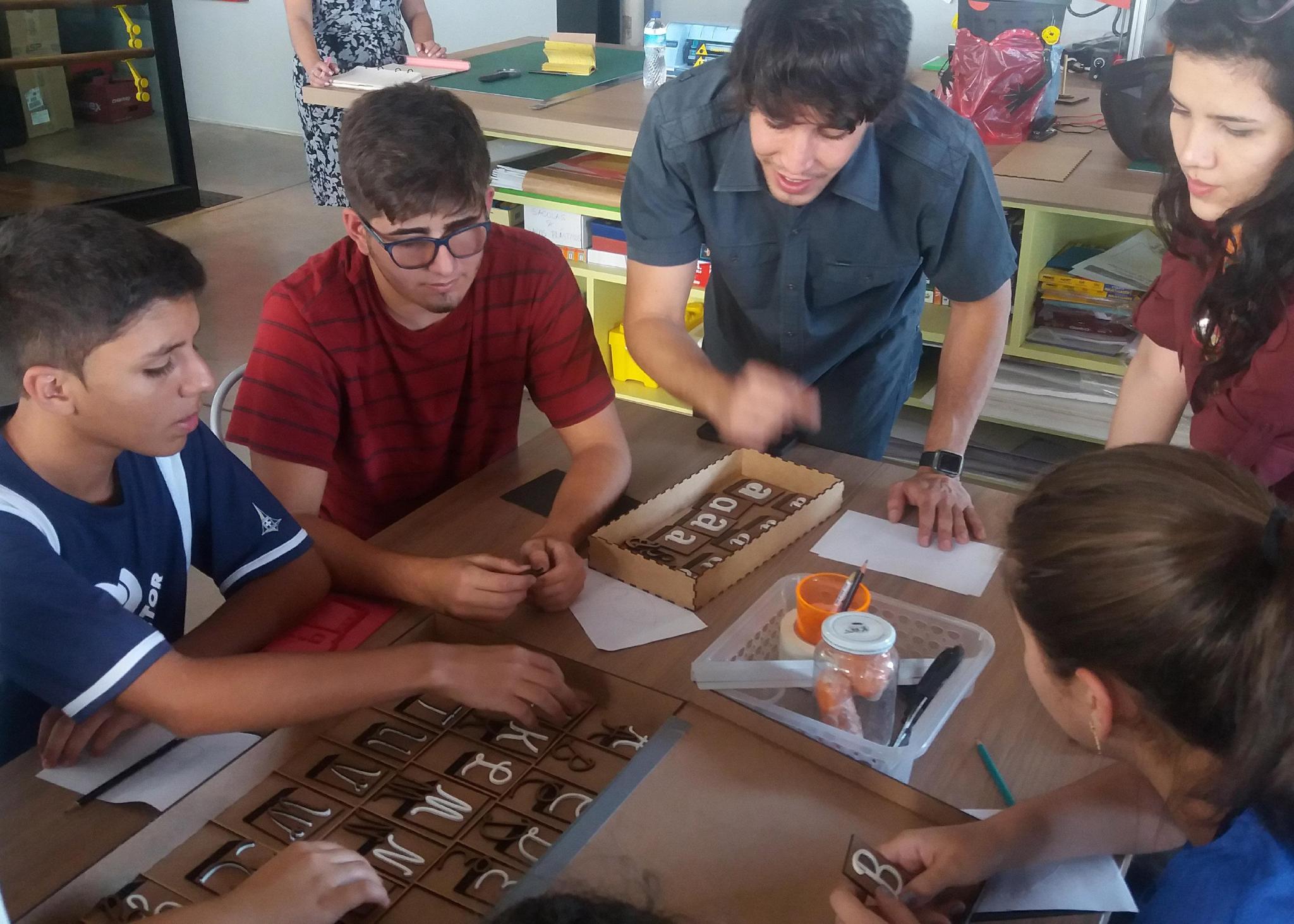
Casa Thomas Jefferson (CTJ) hosted (from August 30th through October 19th) a program entitled “Educational Assistive Technology”. The program aims at prototyping for disability rights to empower youth to shape their world and effect change in their community. In this program, visually impaired and non-visually impaired students learned about fast prototyping and how they can use it to find solutions to problems that students with disabilities face. The idea is to place people with disabilities at the center of the creation of solutions, as they test and act as main players in the design process.
This innovative makeathon received financial support from The International Network of Emerging Library Innovators (INELI). This initiative demonstrated that sound program planning can attract the interest of partners committed to improving the Educational System in Brazil and it can also provide access to minorities. INELI’s main goal is to highlight libraries and innovation hubs that create meaningful and feasible solutions to social and cultural challenges that people in Latin America face.
The program itself was divided into a planning stage and three hands-on meetings. Af first, we hosted a preparatory meeting in which visually impaired students, teachers, parents and school administrators got together for an honest conversation about the challenges of teaching the visually impaired. During the first formal meeting, facilitators conducted an ideation session to help the non-visually impaired truly understand the challenge from the viewpoint of those who face it. At each table, one visually impaired student informed the group about what he/she finds difficult to learn and why. The beauty of the event was that each table narrowed the obstacle down to one challenge and started ideating to solve that specific problem.
Each group had the support of a skilled facilitator. They were:
On September 28th, participants brought the first prototypes and the visually impaired tested and provided feedback on their usability. Based on this input, the whole group worked on finding better solutions, using laser cutters, 3d printers, arduinos, etc. – all the tools available at the makerspace. On October 19th, participants should return for the last meeting. Until then, they are welcome to use CTJ’s learning hub space to embetter their creations.
Casa Thomas Jefferson believes that running programs that place youth at the center and give them opportunity to think collaboratively and to use tools and resources for a meaningful purpose is what defines our spirit.
All the assistive solutions created by participants, using modern prototyping tools will be shared online soon.
Sarah - Maker, 2/Set/2024